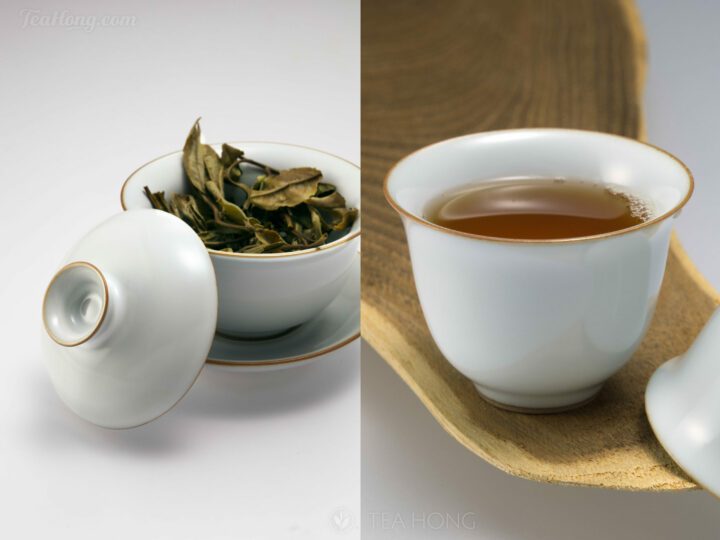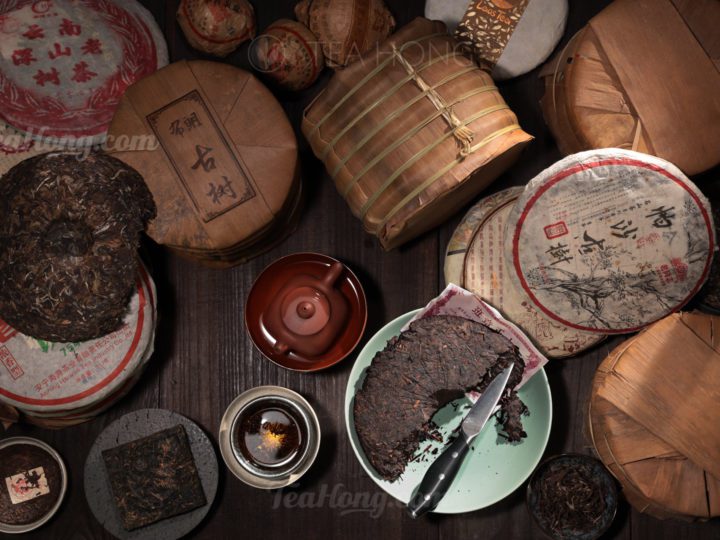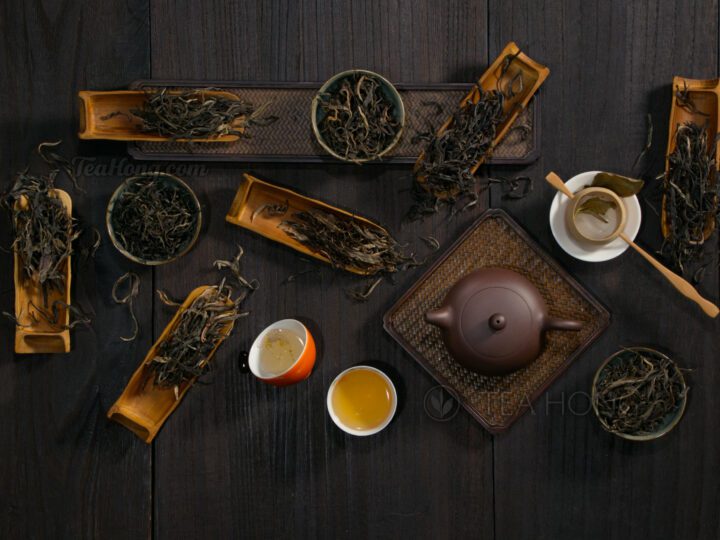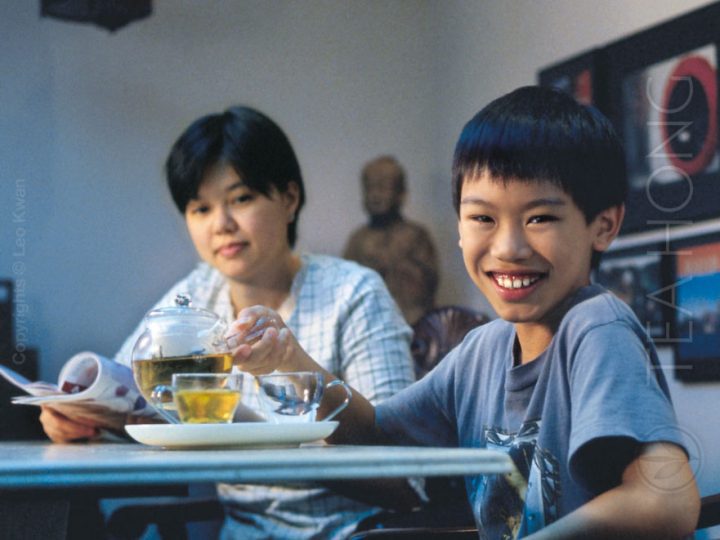Tea compressed into a discus form is basically still a tea like any other loose leaves. The process of compressing does impose a transformation in the cellular structure and subsequently chemical changes in the original maocha, much like rolling or rattling triggers an enzymic oxidation in the production of a black tea or oolong, only in a different manner. This is another topic in an other article. We shall focus on making a good tea from the cha bing first.
A few things to know about a cha bing
Compressing the loose leaf maocha made the tea into a block of thing that has to be broken in order for you to get the amount you need for infusion. So let’s start by getting to know a few basic concepts.
- Shengcha cha bings are generally less dense than their shu cha counterparts.
- Products compressed using the ancient method of stone mortar are relatively more loose than those made with a pneumatic press.
- Ageing loosen up a cha bing
- The edge, ie the perimeter, of a bing is more loose than the centre.
- Although there are huge and mini cha bings, generally the weight of a discus is between the old standard of 357g to the modern standard of 500g. One piece can yield a few hundred cups of tea. That means you need to break only a small portion at a time, and more importantly, the remaining portion needs to be kept clean and well insulated.
First, let’s break a portion from the discus
- There really is no need for fancy equipment. A small paring knife with a good, thick enough handle will suffice. As that one in the photo.
- Always handle a cha bing with very clean hands. No grease, no smell, nor any skin products. Otherwise wear a pair of cotton gloves
- Find the most loosened part on the perimeter of the discus
- If a cha bing is relatively new, you may have to bend that part a few times to loosen it further
- Press the discus down but keeping your pressing hand a distance from the perimeter in case your knife slips. Make sure the discus is stable. Cushion with a clean towel if needed.
- Point the knife towards the mid point of the thickness on the perimeter where you have pressed down. Use a slight pressure to force the knife tip inwards.
- Once the knife is in, twist the blade to loosen up the perimeter further
- Press the knife tip inwards a bit more and twist the blade again
- This will chip up a portion and some leaves will fall off. Collect them all for use.
- Make sure you weigh them to know how much exactly you have there. You may also choose to make enough for a few portions at a time.
It is best to wrap the cha bing in the rice paper before returning it to the white zipper bag that we provide for storage. However, it is okay if you find it too cumbersome and discard that paper, or save it for keepsake.
( note: This method is suitable for cha bings. Not bricks or tuo chas. )
Which teapot?
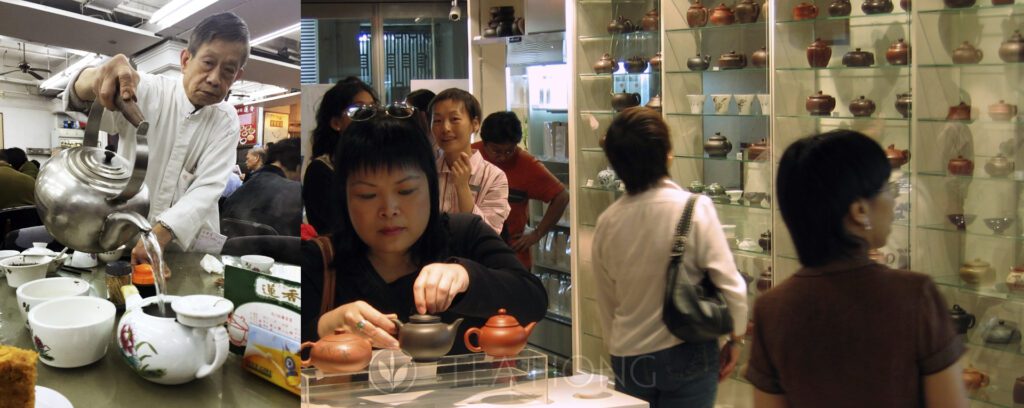

Decide on the size of your infusion vessel and then choose whether to make your cuppa through a standard duration infusion or a short one. This dictates your leaves to water ratio, water temperature and infusion effects.
However, if you need to use a relatively larger vessel, say a 400 ml teapot or larger, you can use only a standard duration infusion method, or a very long one.
Water can be a decisive factor
Like most green teas and high quality oolongs, large leaf pu’ers have a high polyphenol contents that does not play well with water with high TDS.
If you have hard water from your tap, please consider using an effective treatment system to reduce the TDS, ideally to below 150 ppm. Otherwise please use bottled Spring water, not mineral water. Use distilled water if you have no other choices. The ideal water would be a high mountain spring water.
Unless you use a cold infusion approach, which I do not recommend at all for any pu’ers, always boil fresh water for each infusion.
Pu’ers reveal their best taste profiles when infused with water at near boiling temperature. You may use a slightly lower temperature if your infusion vessel is good for heat capacity. A slightly lower temperature affords a longer infusing time for better depth in the body without amplifying bitterness and astringency. More so in a good Yixing teapot.
Always blanch your pu’er before infusion
Infusing a chip and some loosened bits of a cha bing is not unlike brewing other teas. Only that you have to always blanch the leaves before infusion, while you may skip the step in many other teas. Blanch with the same temperature water as you will use for infusing the tea, unless you are doing a cold infusion.
Standard duration infusion
For smaller vessels, say 150 ml to 300 ml, use 1.5 to 2 g of leaves to each 100ml of water. The amount of leaves is dependent on how intense you’d prefer you cup. Also how broken the leaves are. The more broken, the less leaves.
For larger vessels, say 500 ml to 900 ml, use 1 to 1.5g to each 100 ml.
Brewing in an even larger vessel is another topic.
Infuse for 5 to 6 minutes for smaller vessels, 7 to 10 for larger ones. Always completely decant all the liquid after the infusion is done.
This is a great way to make tea in the office using a mug with an infuser or strainer, in a pot for two to three people for breakfast or lunch or an afternoon tea, or for a personal cup to sip on during your private reading time.
Quick brews
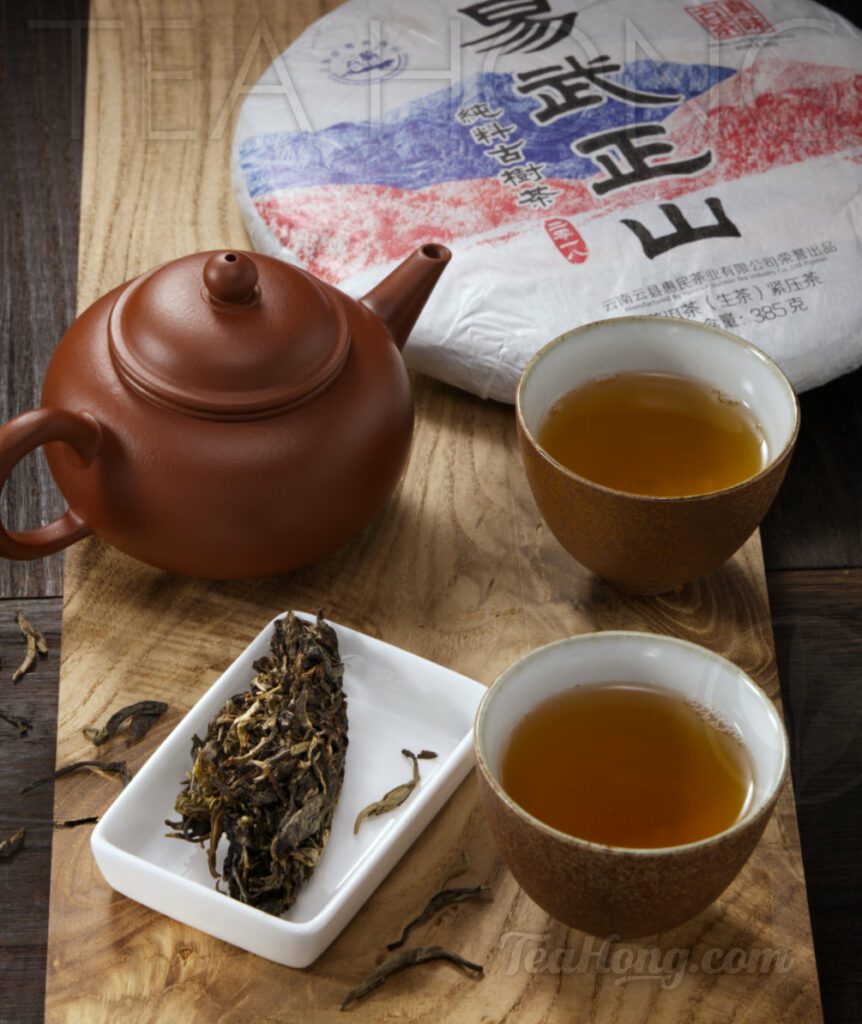

Using a smaller teapot and the right amount of leaves can deliver the full taste potential of a cha bing, even with shorter infusing time
Use only a smaller teapot, or any other suitable vessel when you decide that you want to prepare your tea with a short infusion time but still ample taste. Something between 120 to 200 ml capacity will be easier to manage in the beginning.
Begin a tea with 5 to 7 g of leaves to each 100 ml of water. The amount of leaves correlates not only with the strength you desire, but also the very characteristics of the specific batch of tea itself. Some teas maybe more likeable with more leaves and a touch shorter infusing time, some less and a touch longer.
Infuse for 30 sec in the first round.
You may choose to infuse for a slightly shorter time, say 20 sec. Anything shorter, you are loosing on a lot of the true taste profile. In the first 10 seconds or so of an infusion, mostly what dissolves in the water are caffeine and the layer of carbohydrates near the surface of the leaves. The majority of the minerals, polyphenols and essential oils remain in the leaves.
Overtly short infusing time therefore gives you not only a weak tea, but also a very unbalanced, ie distorted, rendition of the tea.
When a 30 sec steeping tastes too strong for you, use less leaves instead of shorter time. And maybe a slightly lower temperature water as well.
Increase the infusion time by 15% in each subsequent round.
The advantage of this method is that it delivers drinks in a relatively quicker manner, but in a smaller serving, so it is easier to consume the liquor before it gets too cold and loses its flavours. Additional benefits in areas of mindfulness, meditation, social bonding, and/or therapeutic functions are up to the user’s application of the process.
It is also possible to make a very intense, yet epicureanly enjoyable cup once the characteristics of the tea is girdled with the corresponding infusion techniques and tools.
So why are you seeing so many people making tea in the so-called “gongfu” style using such short brewing time as 10 sec or even less?
Since late 1980’s, huge population of working age young people in China haven’t been able to get jobs… ( okay, this is another big story. Some other time ) Anyway, myths spread much easier than truth, especially in an environment where most in the trade really do not know what they are doing. Imitating something that seems to impress people is one easy trick to convince customers.
Just don’t follow myths or those people who forget about common sense.
Comments (0)
Leave a reply
You must be logged in to post a comment.




